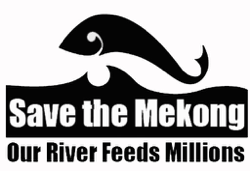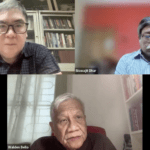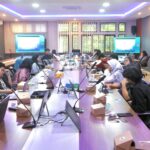by Mary Ann Manahan
originaly posted on The Broker Online
Since the Rio+20 Summit, the ‘green economy’ has been promoted as the new framework and solution to the deepening ecological crises. However, the “green economy” sets the stage for the creation of markets where water and its ecosystem functions (e.g. water purification by pristine watersheds or carbon sequestration of forests and oceans) can be traded, while the people’s rights and common interests are ignored. In the name of conserving water and improving the efficiency of water use, the “green economy” proposes to extract profits from water services, water sources, and water itself through market instruments such as full cost pricing and payment for ecological services.
What is novel and slippery about the “green economy” as a concept is that it goes beyond the mere commodification of water as a public good or service. Water as the engine of the “green economy” allows for the privatization and commodification of all dimensions of water: water catchment, watershed, water sources, aquifers, water quality, etc. It includes monetizing or putting a price tag on the benefits that water brings to humanity and other ecosystems.
Water in the green economy is part of a vision of what is called “ecological modernization”, where economic growth and environmental conservation and protection work side by side. The underlying principle behind this proposal is the insistence that water is treated as a form of natural capital, an economic asset more than anything else, which strips water of its aesthetic and non-monetized values and rejects the holistic and integrated dynamics of ecosystems.
However, rather than a blind belief in the markets as the most efficient allocator of resources, the practice of public and community allocation and management of water services and resources has already created alternative models to commodification and privatization. These alternatives offer new paths for protecting water and providing viable, pro-poor and ecologically sustainable options for the world’s populations that lack or have no access to water.
In light of the post-2015 development agenda, new forms of cooperation and models must be part of the priorities for discussing the future we want for ‘water’.
New Forms of Partnerships
One of the options is Public-Public Partnerships (PuPs), which are not-for-profit, mutually beneficial partnerships between public sector water operators, local communities, trade unions and other social-economic groups. PuPs aim “to link up public water operators on a non-profit basis to strengthen management and technical capacity.” As opposed to public-private partnerships (PPPs), PuPs offer an innovative and practical way of sharing the expertise of public water managers from Southern and Northern utilities to spread good practices and ideas in water management, such as ensuring water delivery to urban poor communities, respecting workers’ rights and adopting core labour standards, and allowing consumers to participate in the determination of water rates; in the process, they provide the social and political support needed for such forms of mutual cooperation.
There are a number of PuPs in Asia in the form of solidarity partnerships, and labour-management cooperation in water supply and sanitation services. For example, since the 1980s, Japan’s municipalities have conducted training courses in sanitation for other public utilities, particularly in Bangladesh, Cambodia, the Philippines, Sri Lanka, Thailand and Vietnam, financed mostly by its own aid agency, the Japan International Cooperation Agency (JICA). European public companies meanwhile have been engaging in a number of international partnerships with Asian public utilities; one such partnership is between Dutch public water operators and not-for-profit entities in Indonesia.
Another example is state-led democratization in the water sector, as in the Indian state of Tamil Nadu, where engineers of the Water and Drainage Board carried out a democratization experiment and changed the management process. Under the engineers’ initiative, water was supplied to 60 million people in Tamil Nadu and irrigation water was delivered to the farms of more than one million families. This was accompanied by attitudinal changes, shifts in perspective and transformation in the institutional culture of water engineers using a process-oriented participatory training methodology based on the traditional practice of Koodam, a Tamil word that can mean gathering, social space, and consensus-building, implying harmony, diversity, equality and justice. The transformation in the institutional culture of water engineers, and the changes in perspectives and relations between local communities and the Tamil Nadu water utility have facilitated the implementation of the joint management of water resources between them. A partnership was also forged between local communities and the water utility for the joint management of water services based on equity, sustainable resource management, improvement in supply and quality, and reduction in operation and maintenance costs.
Women in the communities took a pro-active role in taking care of their water sources, ensuring safe and quality drinking water for all members of the community. The communities instituted their own oversight and monitoring systems to check the quality of their water sources. These have been strong positive tools for improving public water service delivery, caring for water sources and instituting community empowerment.
Upstream-Downstream Watershed Protection
Another innovative model is the upstream-downstream watershed protection. In the Philippines, there have been initiatives by public utilities that have allowed communities to manage and maintain the water sources for the cities. The public utilities directly invest in agro-ecological farming practices and in community livelihoods, with the idea that a “good environment will produce good water.”
In Thailand, competing demands for water from households, agriculture, tourism and industry have led the different interest groups in the Ping River, one of the main tributaries of the Chao Phraya River, to negotiate and balance these demands. The Ping River Basin Committee had brought together various water users, such as local non-government organizations (NGOs), residents of communities located upstream and downstream, and farmers and indigenous people relying on the river for their livelihood and sustenance. The result was a mutually agreed on ecologically sustainable and equitable system of water allocation for all.1
Similarly, diverse actors have taken collective action to protect watersheds and sources of water against the threats of extractive industries like mining. When companies applied to mine inside the Sibalom watershed located in Central Philippines, local community-based water users, village and municipal governments, public water utilities and NGOs banded together to oppose the approval of the applications. They have also invited researchers to conduct studies to estimate the benefits of watershed protection as a means to oppose mining applications within the watershed area. In so doing, the various groups concerned, especially the riparian communities within the Sibalom watershed, were able to gain deeper insights into the laws of nature, motivating them to respect and understand the interconnectedness of ecosystems, and thereby effectively oppose the mining projects.
Towards a New Vision for Water Management
These alternative models of watershed protection and water service provision are diverse, as they depend on the specific conditions of a particular area or country. Although there is no ‘one-size-fits-all’ option, in all the above models, strategies have exhibited the following common characteristics: pro-poor, ecologically sustainable and progressive public water management systems. They also proved to be practical and workable solutions that do not rely on market mechanisms or the corporate private sector for which profits come before public and community interests.
Such models promote a new vision for water management2 that re-establishes water as commons and make water governance an issue of social and ecological justice as well as of democratization. Furthermore, the above examples highlight fundamental principles for achieving the human right to water and sanitation and sustaining the global water commons:
• water is a public good and a human right, which means that water is life, a gift of nature and its nurturance remains the responsibility of everyone for the survival of the planet in the present and for the future. This nurturance is rooted in the respect of all that sustain the global water commons;
• ecosystems are interconnected, which necessitates breaking down the false division between urban and rural water systems;
• water as part of nature has its own logic, which means that the laws of nature and the integrity of the water cycle must be maintained;
• active water citizenship in the management and governance of water or the act of stewardship and protection of water entails that people’s participation should not be cursory or mere tokenism;
• a social justice approach is required in water resources management and achieving the human right to water and sanitation;
• a conservation-first approach takes precedence over a “return on investment” approach;
• the role of the state, or at least the role of public utilities and technical capacity (whether local, regional or national) must be brought to bear to ensure the right to water and sanitation rather than corporate profits; and
• the power of corporations, especially the transnational water companies and extractive industry companies in water management must be rolled back;
Furthermore, these examples show that water justice—ensuring that all communities, especially the poor and marginalized have equal and equitable access to safe, affordable and sustainable water use for various purposes such as drinking, fishing, recreational and cultural uses—is possible in practice.
Water has become an arena of struggle where people’s local, national, regional and global solidarity can be fostered. Now more than ever, we have to challenge the dominant market-driven model of water management and governance which has failed for the last 20 years and is still being peddled at Rio+20. Given the collective experience, determination and the broad solidarity of the global justice movements, reclaiming the discourse that water is part of the commons and overcoming the “green economy” is not only possible, it is necessary.
- Dargantes, B. B., Manahan, M, and Batistel, C., Springs of Hope: Alternatives to Commercialization of Water Resources and Services in Asia, in Alternatives to Privatization Public Options for Essential Services in the Global South, David A. McDonald and Greg Ruiters (eds.), Routledge: Routledge Studies in Development and Society series, 2012.
- For more examples, read Buenaventura Dargantes, Mary Ann Manahan, Daniel Moss and V. Suresh: Water, Commons, Water Citizenship and Water Security, which can be downloaded here and here.








